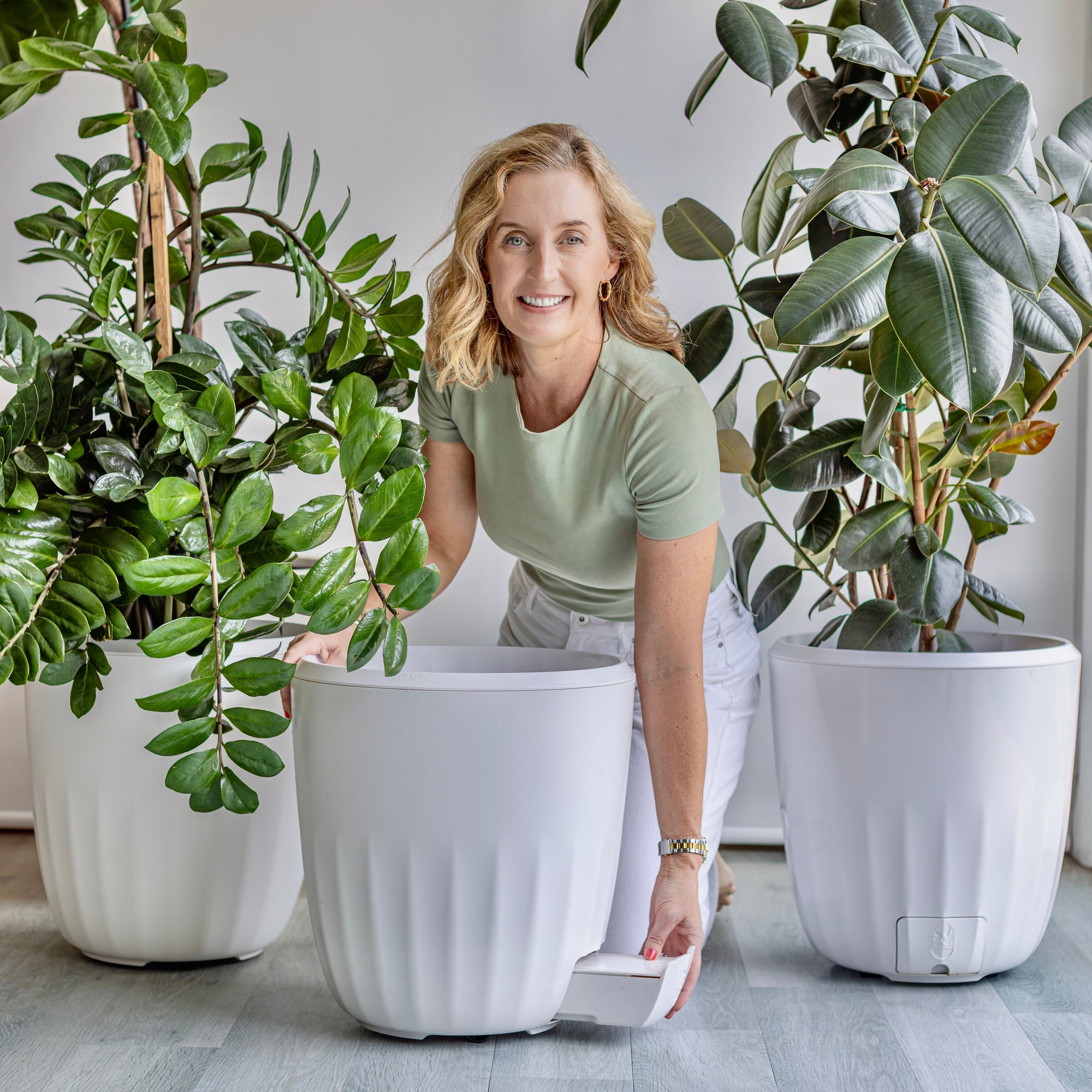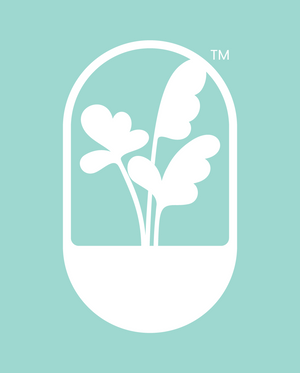
How to Fix an Overwatered Plant (Hint: Pot Drainage Matters!)
While many of us get into houseplants and outdoor pot plants, the many benefits of this happy hobby can be outweighed by the challenges of proper plant care. Improper watering constantly ranks as the top cause of avoidable plant deaths! We seem to kill our plants with kindness... but they are really begging for a little alone time without:
- any water being freshly applied or
- being left to annoy the roots when it seeps through to the bottom of the pot after a watering session.
Overwatering is the most common plant mistake that often leads to premature plant funerals. Any plant's watered too often or has poor drainage is likely to develop root rot. Drainage holes are vital in keeping your plants alive, but they also need to be managed if you want to avoid them becoming clogged, plus prevent mess and puddles. Signs may include yellowing, softened or wilting leaves; plant pests; mouldy soil; or stunted growth.
So, if you're a black thumb who's prone to killing your plants, start by checking the roots! Brown and mushy is not good. We want to be in our white and firm era.
Follow our easy step-by-step tutorial on how to fix those roots and getting your drainage sorted.
STEP 1: IDENTIFY & CHOP ROTTING ROOTS OFF YOUR PLANT

Remove your plant from its pot and transfer to a shallow bowl in a sink or a waterproof area. Soak your plant's root bowl and gentle tease the roots clear of soil - the sprayer on a tap or hose really helps with this task. Look for any soft and squishy roots then trim them away.
These dying roots will result in a poorly plant, along with possible fungal or bacterial growth in the soil. A knock-on effect of these could be plant pests and further harm to the plant.
STEP 2: DIAGNOSE WHAT HAS CAUSED THE PLANT PROBLEM

Rotting only happens when your soil is staying too wet for too long, which deprives those roots from oxygen. This does NOT happen because you're giving the plant too much water in one session! It actually occurs because you're watering before the soil has time to dry out part way down the planter and/or poor drainage!
A standard pot usually only has one drainage hole. One is better than none, but it becomes a single of point failure as the hole can easily get blocked by roots and soil over time.
Nursery pots are better due to more drainage holes (just hide them inside a decorative pot to help improve the aesthetic). For watering sessions, move the nursery pot to a sink, bathroom or your lawn so they can drain thoroughly without too much of a mess. Though watch you're not washing soil chunks down your piping. This process can particularly become problematic for larger plants and if you're time-poor. Isn't that all of us though?!
(Embarrassing side note: can you believe I used to do soil testing at remote airfields and I once caused a very serious blockage in a hotel bathroom that I was sharing with three colleagues Oh the shame!)
Self-draining planters
For the best solution, you cannot beat the innovative PerkyPod - the world's first self-draining plant pot. Not only does the floating base provide optimal drainage, there's also a geofabric underneath to prevent blockages and a funnel-shaped base to ensure every single drop of excess water is caught by water catchment drawer below. The drawer can be easily removed and the water tipped out when it suits your schedule.
A word on self-watering plant pot options
Self-watering plant pots provide great drainage too and they also have a reservoir that's designed to hold excess water. However, while the excess water is useful for some plants to self-replenish as needed, the water is trapped and cannot be removed easily, thus becoming a breeding ground for bacterial and plant pests. To learn more about self-watering planters, read our popular blog on the topic here.
STEP 3: REPOT YOUR PLANT WITH NEW POTTING MIX AND PROVIDE BETTER DRAINAGE
 Now it's time to give your plant a new home that has better drainage. Start with fresh potting mix and ensure it's well-draining. The label on pretty much every houseplants at the nursery will stipulate 'well draining soil' as a requirement! (Pro tip: mix 2 parts potting mix with 1 part perlite and 1 part orchid bark.) Plants love aeration and a good potting mix will also provide nutrients for your plants.
Now it's time to give your plant a new home that has better drainage. Start with fresh potting mix and ensure it's well-draining. The label on pretty much every houseplants at the nursery will stipulate 'well draining soil' as a requirement! (Pro tip: mix 2 parts potting mix with 1 part perlite and 1 part orchid bark.) Plants love aeration and a good potting mix will also provide nutrients for your plants.
The PerkyPod solution
If you're not using a PerkyPod with its integrated geofabric filter, try adding your own filter to the base of your pot so your precious drainage hole/s are protected to provide a free-flowing outlet for excess water. Often a chux cloth (cut to size) can do the trick, and your local nursery may have some other options. The added advantage of a filter is less potting mix being washed away when you water. Erosion of soil inside your pot is not only wasteful but constant top-ups can be quite costly and time consuming. In the mean time, erosion can lead to your plant's root ball being exposed which harms the health of the plant.
When you water your plant, give it a thorough soaking and check that it's draining properly. There should be water pouring out the bottom of the pot. Then give it the silent treatment for as long as possible before watering again. Each plant has different preferences here so see what Google recommends!
CONCLUSION
Healthy roots are essential for perky plants. And perky plants make for perky plant parents so why not let us know if you've found this blog post helpful?

